
We left the Highlands of Iceland today and headed for Reykjavik.
Along the way to Reykjavik, we stopped at the gorgeous Gullfoss and also spent time in Pingvellir National Park.
Like all of the waterfalls we have enjoyed in Iceland, Gullfoss inspired awe in all of us.
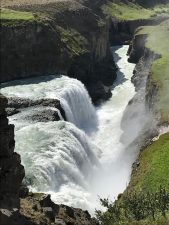
Here’s a video of Gullfoss:
Then, we stopped at Þingvellir (Thingvellir), a historic site and national park in Iceland. It’s known for the Alþing (Althing), the site of Iceland’s parliament from the 10th to 18th centuries. On the site are the Þingvellir Church and the ruins of old stone shelters.
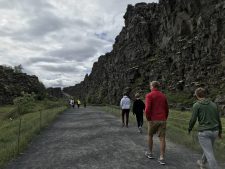
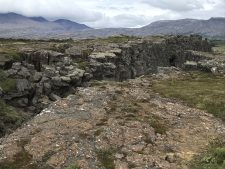
Þingvellir has been declared a UNESCO world heritage site because of the area’s abundant natural wonders, including Þingvallavatn, Iceland’s largest natural lake, and the Silfra fissure, in which one can dive or snorkel between the American and European tectonic plates.
Iceland sits on top of the Mid-Atlantic Ridge, a 25-mile long crack in the ocean floor caused by the separation of the North American and Eurasian tectonic plates. The country is growing by 2.5 cm per year as it continues to be pulled apart while splitting wider at the points where the two tectonic plates meet. As a result, the western part of Iceland (west of the volcanic zones) belongs to the North American plate and the eastern is the Eurasian plate, which means Iceland is actually in two continents.
Pingvellir sits in a rift valley caused by the separation of the two tectonic plates, with rocky cliffs and fissures, such as the huge Almannagjá fault, which we walked through. Spanning the Mid-Atlantic Ridge, Iceland emerged as a result of the divergent, spreading, boundary between these two plates and the activity of Iceland’s own hotspot or mantle plume.
The Silfra fissure opened in 1789, due to the movements of the tectonic plates that frame Þingvellir National Park. The North American and Eurasian plates, which run all the way through Iceland, separate at about 2.5 centimeters per year, and as they do, they tear open fissures in the land between them. The Silfra Rift is considered one of the greatest dive sites in the world. We didn’t do it, but many visitors pay a tour guide to scuba dive in what is the clearest water in the world to get underwater, up-close views from the crack between the American and the Eurasian continents.
After having a picnic at Pingvellir, we headed for Reykjavik.
Reykjavik is Iceland’s capital and largest city. It’s home to the National and Saga museums, tracing Iceland’s Viking history. We loved Reykjavik and spent a day walking its streets and touring the striking and commanding 250-feet-tall concrete Hallgrimskirkja church. We rode the elevator to the top, where we were afforded beautiful views of the city.
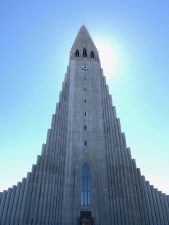
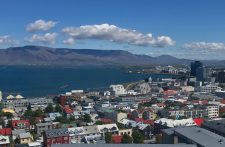
After a day of rest and relaxation–and some loads of laundry–we were filled with anticipation for what would come next: The Secret Solstice Music Festival. We had bought tickets for Friday, Summer Solstice, and we couldn’t wait to listen to some great music, and dance under the midnight sun.
We love to dance. So, even though we have done some epic hiking and exploring, this might just be the most physically demanding portion of our Iceland trip! Hahaha. But seriously. 🙂
We had an amazing night! We hung in the very front–in the mosh pit–with the boys for Pusha T. But after Pusha T, Jerry and I, being the old folks in the family, opted to move to the far back where we wouldn’t have to brace for flying dancing bodies. 🙂
It was an exhilarating evening of fantastic music and energy under the midnight sun, and I’m pretty sure the whole family will never forget the 2019 Summer Solstice.
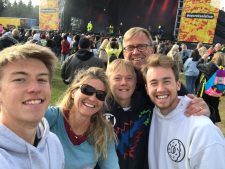
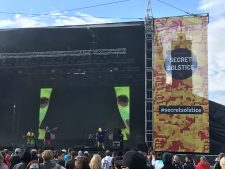
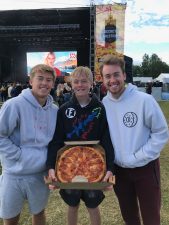

Here are some videos from the Secret Solstice Festival in Reykjavik:
Pusha T
“Old Folks Still Got It”
Pussy Riot
For the rest of the Iceland story, and for additional Iceland-related blog posts:
Iceland or Bust
Iceland, Part 5 of 7: Hiking in Landmannalaugar: Climbing Brennesteinsalda and Blahnjukur Volcanos
Iceland, Part 7 of 7: Our Epic Grand Finale–Climbing Snaefellsjokull Volcano and Glacier